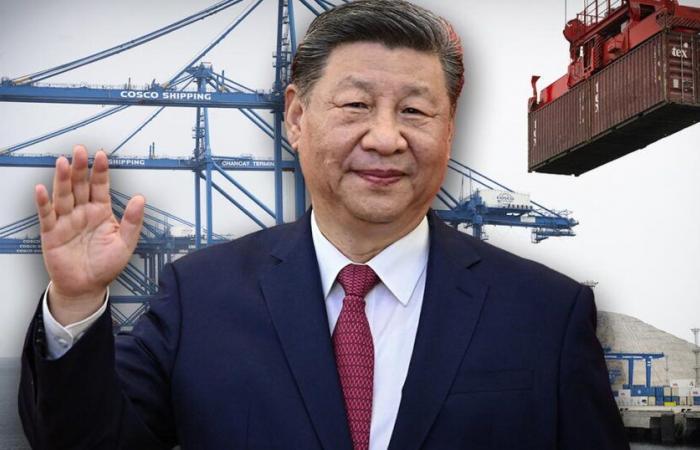
China has reinforced its presence in Latin America with the establishment of a direct Maritime Route that links the puerto de Nanshain Guangzhou, with the Megapuerto de Chancay, on the central coast of Peru. The first route was made by the Cosco Volga shipwhich transported more than 400 containers with merchandise of Chinese origin. This connection allows to shorten the navigation time between Asia and South America to about 30 days and represents an approximate 20% reduction in logistics costs, according to the CCTV state chain.
The recent one Maritime Route between China and Peru represents a strategic advance within the Strip and route initiativepromoted by President Xi Jinping, who described the project as the beginning of a modern “Maritime silk route of the 21st century”. The Chancay megaport, developed by the COSCO Shipping company with an initial investment of US $ 1.4 billion, is emerging as a new key logistics axis to link Asia with Latin America, avoiding passing through the Panama Canal.
China opens a new direct sea route between Guangzhou and Megapuerto de Chancay
The connection starts from the puerto de Nanshathe main logistics center in southern China, and arrives directly to Chancay, located north of Lima. The Peruvian port has 15 bingers and advanced technology to receive large -draft ships, which facilitates the exchange of intermediate non -scales. This improvement allows a more agile and sustainable logistics between the two continents.
Among the products that are exported from China stand out Appliances, electronic products, furniture, car spare parts and toyswhile from Latin America there is a greater presence of fresh fruits, shellfish, red wine of the Andes and minerals in the Asian market. The development of a cold chain in Nansha will also allow these products to be conserved in optimal conditions for transport.
Mexico and Chile, keys in the expansion of the Chinese maritime network to Latin America
In addition to Peru, the new route contemplates Strategic ports such as Manzanillo (Mexico) and San Antonio (Chile). These connections will allow trade between Asia and Latin America to diversify, in addition to strengthening regional economic ties with China and reduces the dependence on traditional routes such as the one that crosses the Panama Canal.
In the case of Manzanillothe Mexican port is integrated as a key point to redistribute goods to North America, while San Antonio reinforces access to the markets of the Southern Cone. According to official data, trade between China and Latin America exceeded 500,000 million dollars in 2024which consolidates an increasingly strategic alliance in commercial and logistics terms.





